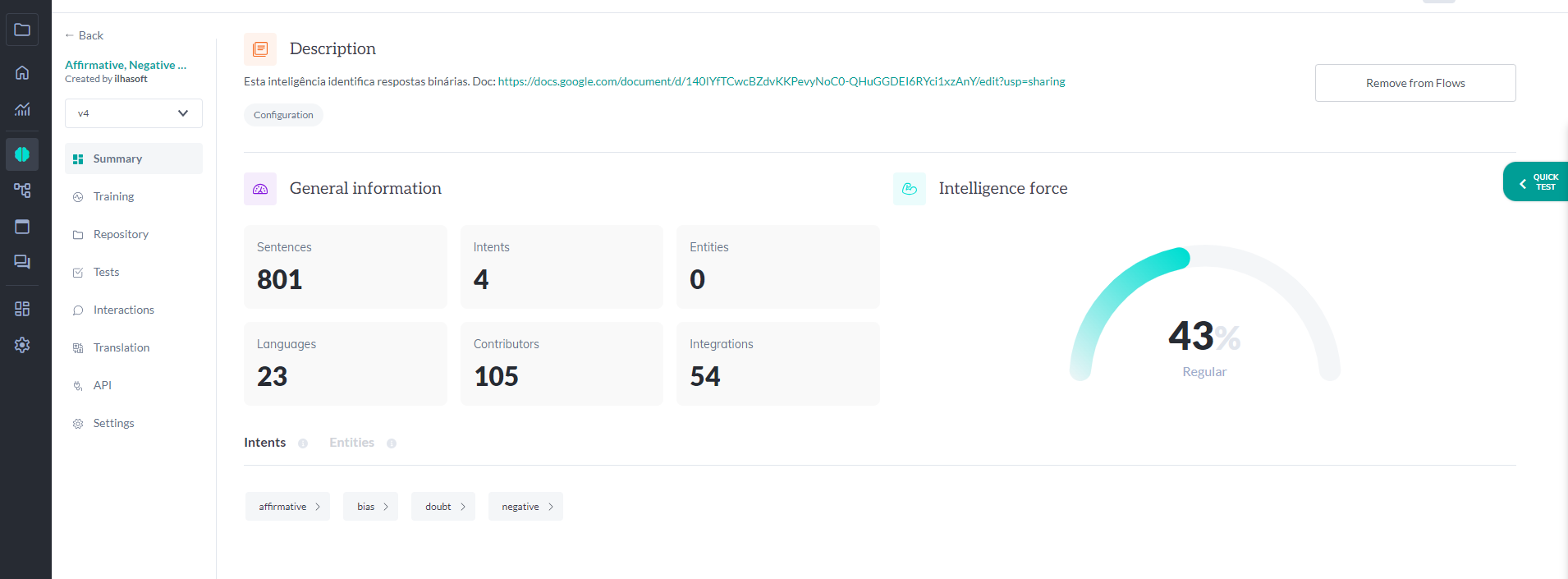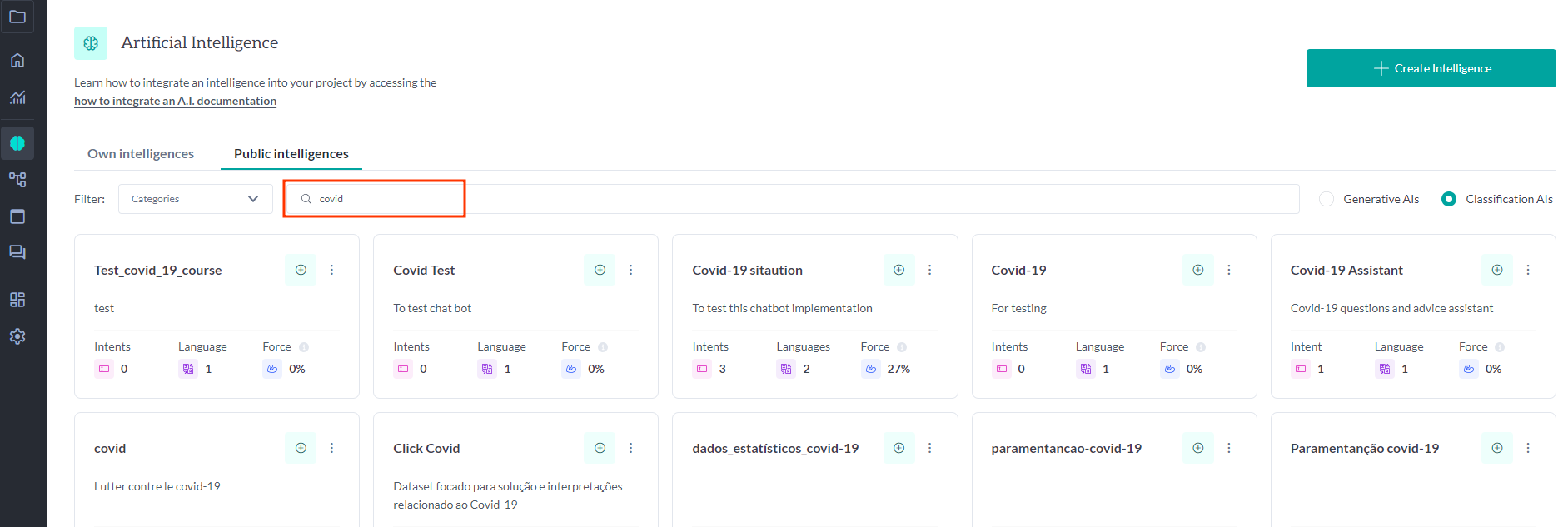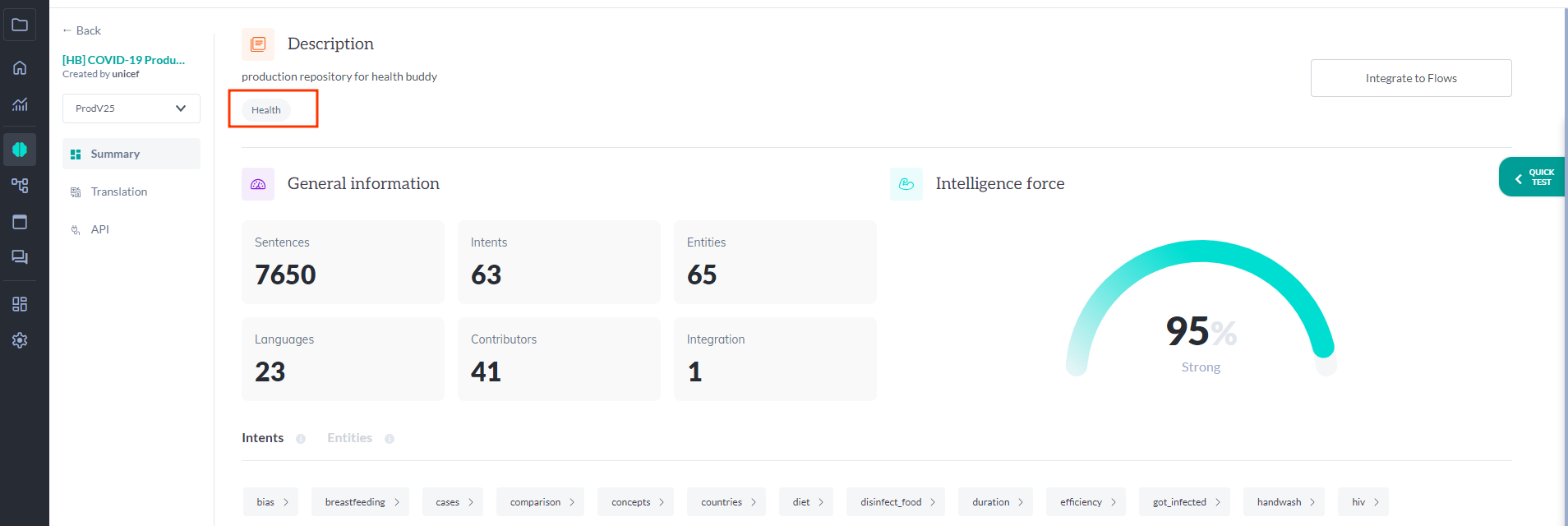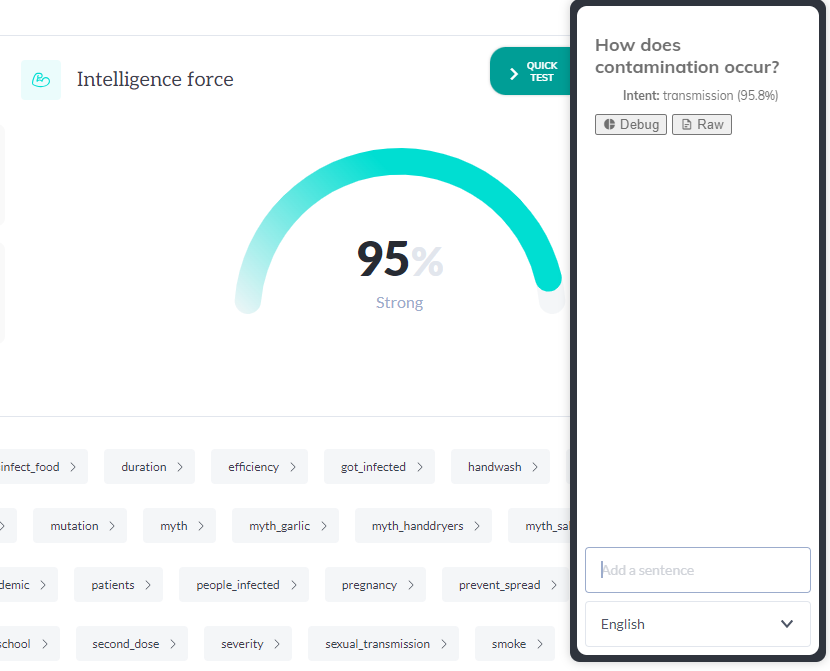Initial concepts
So, what we can do with the Platform?
How do I know if my company needs a chatbot?
Register and login
First Steps - Creating your project
Choose your plan
Profile
Permission System
Project Dashboard
Platform Glossary
Changing the Platform Language
2-Factor Authentication
Invalid authentication code
Artificial Intelligence
Flows
Expressions and Variables Introduction
Variables Glossary
Expressions Glossary
Flows Creation
Flows introduction
Flow editor and tools
Action cards
Decision cards
Adding Media to the message
Call Webhook: Making requests to external services
Import and export flows
Using expressions to capture the user's location
Viewing reports on the platform
Route markers
WhatsApp Message Card
Studio
Contacts and Messages
Groups
Messages
Triggers and Campaigns
Adding a trigger
Triggers Types
Tell a flow to ignore triggers and keywords
Campaign introduction
How to create a Campaign
Editing events
Creating contact from an external Webhook
Contact history
How to Download and Extract Archived Data
Human Attendance
Weni Chats: Introduction to the Chats module
Weni Chats: Human Service Dashboard
Weni Chats: Attendance distribution rule
Weni Chats: Using active triggering of flows
Using groups to organize human attendance
Integrations
Settings
How to connect and talk to the bot through the settings
Adding a Facebook Channel
Adding a Viber channel
How to Create an SMS Channel - For Developers (RapidPro)
Web Chat Channel
General API concepts and Integrations
How to create a channel on twitter
How to create a channel on Instagram
How to create an SMS channel
Adding ticket creation fields in Zendesk
Adding Discord as a channel
Creating a Slack Channel
Adding a Viber channel (RapidPro)
Creating a Microsoft Teams channel
Weni Integrations
How to Use the Applications Module
How to Create a Web Channel
Adding a Telegram channel
How to create a channel with WhatsApp Demo
Whatsapp: Weni Express Integration
Whatsapp: How to create Template Messages
WhatsApp Template Messages: Impediments and Configurations
Supported Media Sending - WhatsApp Cloud
Zendesk - Human Support
Ticketer: Ticketer on Rapid Pro
Whatsapp Business API
Active message dispatch on WhatsApp
Whatsapp business API pricing
How to Verify My Business
Whatsapp Bussiness API: WhatsApp message triggering limitation
Regaining Access to Business Manager
Webhook Configuration: Message Delivery Status
The Basics of Integrations
Native ChatGPT Integration
Native Integration - VTEX
General settings
General Project Settings
Weni Chats: Setting Up Human Attendance
Weni Chats: Human Service Management
Weni Chats: CoPilot
Data and BI
How to Install and Use the Weni Data Connector for Power BI
Incremental Update - Power BI
Explore Weni's Database Documentation
Tips for Data Modeling in Power BI
Filter using Contact Fields in Power BI
UX Writing
- All Categories
- Artificial Intelligence
- What is an Intelligence?
What is an Intelligence?
Overview
A Dataset or Intelligence is the main part of your bot. That's where all the training, test and translation phrases are. It's also where you'll find the general settings.
On the Weni homepage, when you click on Artificial Intelligence the platform will present all the intelligences linked to your project.

By clicking on the "Public Intelligences" card you will find the list of all intelligences created so far by other users. For each of them, we can see the name, author, languages and categories.

Click an intelligence to enter the Dataset main page.

Researching an Intelligence
You can search for a specific dataset by typing the name in the search bar at the top of the homepage.

Categories
A dataset category refers to what context area is the training related to. In the example above, we searched for the name "COVID-19" that are related to Health. Use categories for other users to easily identify the purpose of your intelligence.

How do Languages work at Weni?
One of Weni's core features is its ability to have multiple languages for the same intelligence!
This allows the user to perform the same intelligence training for several different languages, so the bot can be used in several countries within the same context without changing their assertiveness in predictions, because it has the same base of training phrases!
At Weni, you can translate your dataset into over 150 languages in a very easy way!
Quick Test
When training on Weni you may find the need to test your dataset in an easy way. To help you with that, BotHub has a quick test functionality inside the intelligences.
To access it, enter the repository and click in the tab "Quick Test" on the right of the screen.
Then, type your input phrase, and the prediction will happen based on the dataset trained in this repository.

The quick test brings us some important information about the intelligence, which are:
- the intent, entities, and confidence for the input;
- a debug option that shows us the weight of each word on the phrase in the prediction;
- the raw data for the prediction (JSON format);
